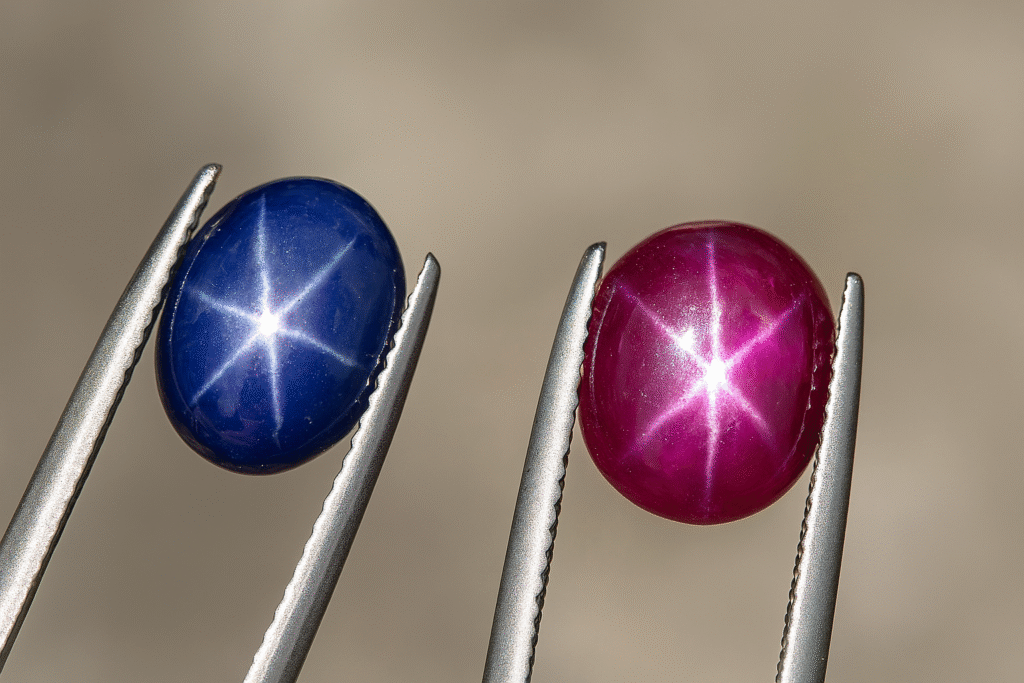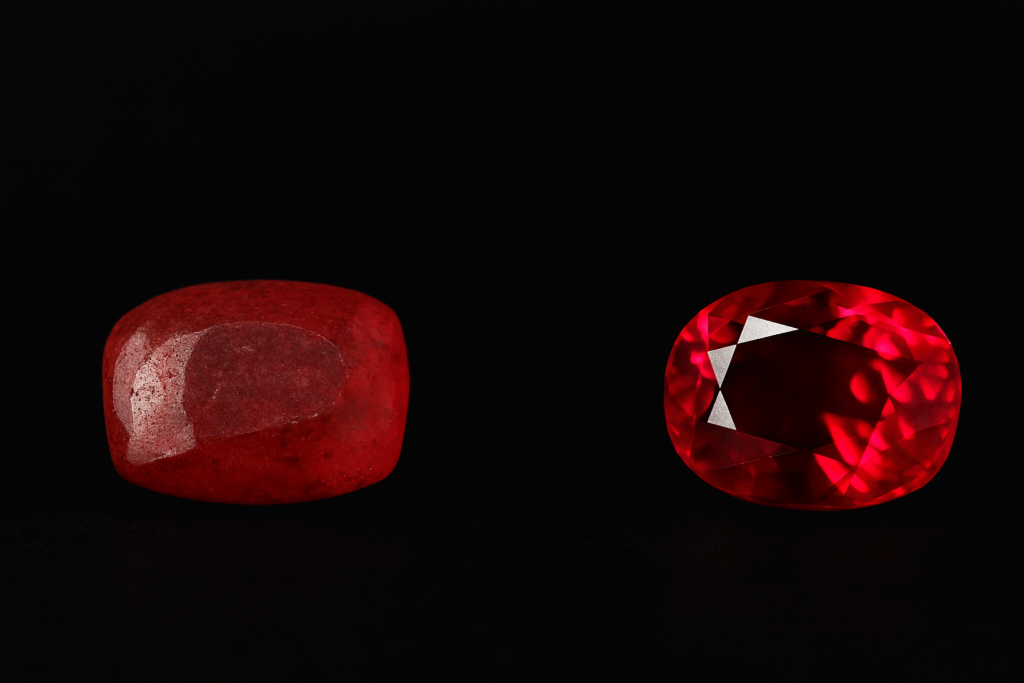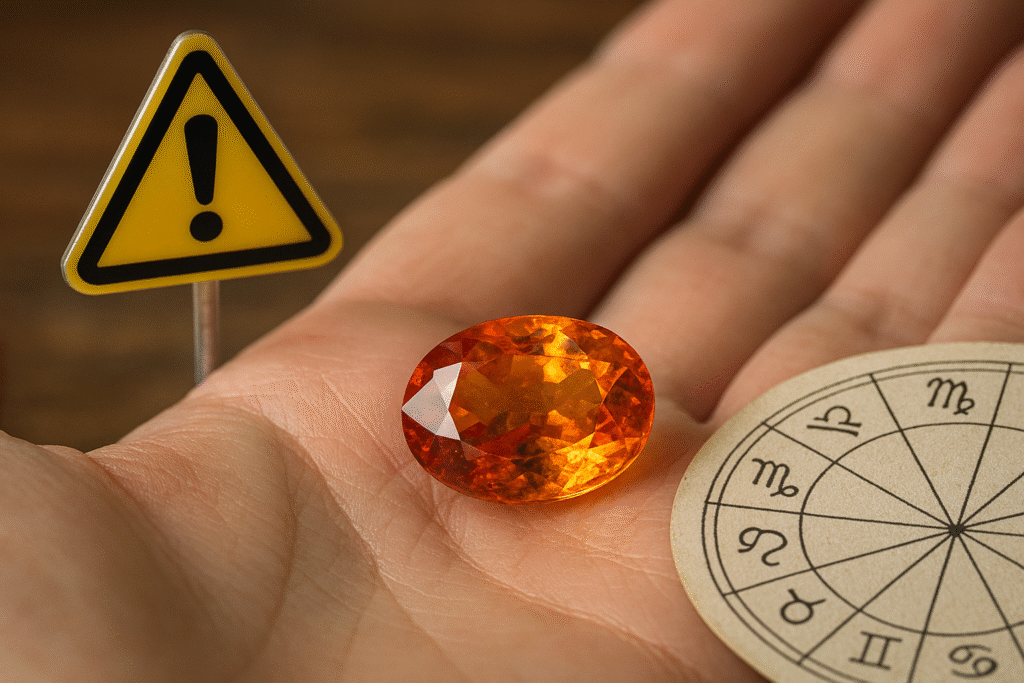Quick Answer
A quality star sapphire or ruby is defined by its sharp, centered, six-rayed star — not just by body color. This guide explains how to judge these gems using insights from my 40 years in the trade.
The Story Behind Star Stones
In the 1990s, a young couple showed me what they thought was a magnificent star ruby from Jaipur. The body color looked rich, but the star was faint and off-center. They had overpaid for a weak stone. That day, they learned the truth: in a quality star sapphire or ruby, the star matters more than size or color.
Why the Star Defines a Quality Star Sapphire or Ruby
- The value of a quality star sapphire or ruby depends on the sharpness and centering of the star.
- A fine gem shows six bright, straight rays that meet in the middle.
- Weak or misplaced stars can lower value by 40–60%.
- Studies show 70% of tourist-market star stones are weak or uneven.
👉 See my guide on buying sapphires safely for more tips.
👉 GIA also explains the properties of star sapphire.
How to Judge a Quality Star Sapphire or Ruby
- Hold it under a single light source.
- Tilt slightly: the star should glide smoothly across the surface.
- Ask yourself: is this truly a quality star sapphire or ruby, or just a colored stone with a weak star?
Case Studies: How a Quality Star Sapphire or Ruby Holds Value
- Bangkok (2003): A client chose a small sapphire with a sharp star. It later gained 30% auction value in five years.
- Sri Lanka (2010): Dealers paid 50–80% more for sharp stars, even in lighter-colored stones.
👉 Read more on gemstone light secrets.
Pro Tips for Choosing a Quality Star Sapphire or Ruby
“The key is: in a quality star sapphire or ruby, the star always outweighs the color.”
- Don’t be swayed by size alone.
- Always check under direct light.
- A smaller but sharp star stone holds value better than a large blurry one.
👉 You may also like my post on why certification matters in gem buying.
👉 For lab info, check SSEF Gem Lab.
FAQs on Star Sapphires and Rubies
Q1. Are star sapphires rare?
Yes. Fewer than 1 in 100 sapphires show a visible star.
Q2. Do synthetic star stones exist?
Yes. Flame-fusion sapphires often show overly perfect stars. Always demand certification.
Q3. Which matters more: star or color?
Star sharpness. A lighter sapphire with a sharp star is more valuable than a dark stone with a blurry star.
Q4. How do I avoid fakes?
Only buy with certification from GII, GIA, or SSEF.
Introduction
This comprehensive Watch Buying Guide answers the most common questions about timepieces.
Whether you’re purchasing your first watch or adding to your collection, these expert insights help you make informed decisions.
From understanding movement types to choosing the right size for your wrist, you’ll find everything needed before making a purchase.
What Types of Watches Should You Consider? – Watch Buying Guide Insights
Understanding the five main categories helps narrow your options:
- Mechanical watches – Use springs and gears. No battery needed.
- Quartz watches – Battery-powered; most accurate.
- Automatic watches – Wind themselves from wrist movement.
- Digital watches – Display time numerically on a screen.
- Smartwatches – Connect to your phone and track fitness data.
Accuracy Expectations – Watch Buying Guide Tips
- Quartz watches – Lose about 15 seconds per month.
- Mechanical watches – Lose 20–40 seconds per day.
- Atomic watches – Lose 1 second every 100 million years.
- Your phone’s clock stays perfectly accurate.
Water Resistance Considerations
Water resistance ratings affect usage scenarios:
- 30m – Handles rain and handwashing
- 50m – Safe for swimming
- 100m – Suitable for snorkeling
- 200m+ – Scuba diving
Replace gaskets every 2–3 years to maintain resistance.
Maintenance Schedule – Watch Buying Guide Advice
- Quartz watches – Battery replacement every 1–3 years.
- Mechanical watches – Full service every 3–5 years.
- Service costs: $200–800 depending on the brand.
Watch for stopping, running fast/slow, or condensation under the crystal.
Pricing Strategy
- Budget watches – Plastic cases, basic movements
- Mid-range watches – Steel cases, reliable mechanisms
- Luxury watches – Precious metals, hand-finished details
Remember: craftsmanship, materials, and brand prestige drive prices.
Sizing Advice
- 6–7 inch wrists – 38–42mm
- 7–8 inch wrists – 40–44mm
- 8+ inch wrists – 42–46mm
Ensure lugs don’t overhang wrist edges.
Complications to Prioritize
- Date display – Useful daily
- GMT hand – Second time zone
- Chronograph – Stopwatch
- Moon phase – Decorative
- Annual calendar – Adjusts month lengths
More complications = more things that can break.
Maintenance Tips
- Clean with a soft cloth
- Avoid extreme temperatures & magnets
- Wind manual watches daily
- Use watch winders for automatics
- Don’t adjust date between 9 PM–3 AM
Investment Potential
- Most watches lose value after purchase
- Only select Rolex, Patek Philippe, Audemars Piguet models appreciate
- Vintage watches from 1960s–70s show strong growth
- Buy watches you enjoy wearing, not solely for investment
Essential Tools
- Spring bar tool
- Case back opener
- Soft polishing cloth
- Watch cushion
- Demagnetizer
Where to Purchase
- Online – Better selection, often cheaper
- Physical stores – Try before buying
- Authorized dealers – Full warranties
- Grey market – Discounts, limited warranty
- Forums/eBay – Vintage pieces, verify authenticity
Learn More:




